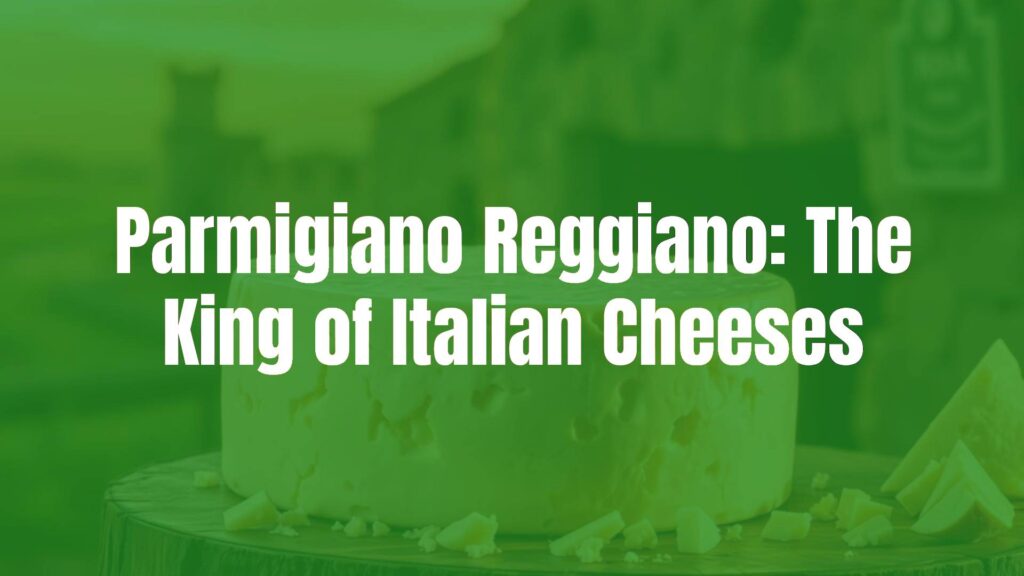Introduction to Parmigiano Reggiano
Parmigiano Reggiano stands at the pinnacle of Italian cheeses, renowned globally as a symbol of heritage, craftsmanship, and gastronomic excellence. Recognized for its complex flavors, granular texture, and remarkable versatility, this aged cheese is often dubbed the “King of Cheeses.” Crafted exclusively in specific regions of northern Italy, Parmigiano Reggiano is strictly regulated by Denominazione di Origine Protetta (DOP) to ensure authenticity and quality.
Distinctive Features and Production
Parmigiano Reggiano is easily distinguished by its hard, gritty texture and rich aroma. When broken, it fractures into moist, crumbling shards, a testament to its unique aging process. Its flavor profile is deep and nuanced, offering notes of roasted nuts, savory broth, and a hint of fruitiness, with a subtle saltiness and lingering umami.
The cheese is crafted exclusively from cow’s milk sourced from specific provinces: Parma, Reggio Emilia, Modena, Bologna west of the Reno River, and Mantua on the right bank of the Po River. Only raw, unpasteurized milk is used, collected twice daily and partially skimmed to yield the ideal fat content. Production involves traditional copper vats, natural whey starters, and the addition of rennet. After forming and salting, wheels are aged for a minimum of 12 months, but many are matured up to 36 months or more, deepening the flavor and crumbly texture. Each wheel is rigorously inspected before receiving the distinctive Parmigiano Reggiano mark.
Historical and Cultural Legacy
The origins of Parmigiano Reggiano date back over eight centuries to the Middle Ages. Originally created by Benedictine and Cistercian monks seeking a method to preserve surplus milk, the cheese has been referenced in literature since the 13th century, including by Boccaccio and Casanova. Today, Parmigiano Reggiano remains an enduring symbol of the Emilia-Romagna region and is celebrated in festivals, culinary events, and Italian cultural identity.
Enjoyment and Pairings
Traditionally, Parmigiano Reggiano is enjoyed in chunks, often accompanied by a drizzle of acacia honey, fresh pears, or balsamic vinegar from Modena. In Italian households, it’s commonly savored as an appetizer or at the end of a meal. Its savory and crystalline character makes it an excellent match for full-bodied red wines, sparkling Lambrusco, or mature whites like Soave.
On the table, Parmigiano Reggiano serves as a staple condiment: freshly grated over pasta, risotto, and soups, it imparts aromatic depth and umami-rich complexity. The cheese’s rind, too tough to eat, can be simmered in broths and stews to enrich flavor.
Regional Variations and Aging Differences
While the production method is closely regulated, subtle differences can emerge based on microclimate, pasture, and local traditions among dairies. The primary variations arise from the duration of aging. “Vecchio” (aged 18-24 months) offers a balance of sweetness and nuttiness, while “Stravecchio” (aged over 30 months) boasts a more pronounced, robust flavor and a drier, more crumbly texture. Each wheel is unique, reflecting its place of origin and time spent maturing.
Serving Suggestions and Storage Tips
For optimal enjoyment, Parmigiano Reggiano should be served at room temperature to fully release its aroma and flavor. When storing, tightly wrap the cheese in wax paper or parchment and a loose layer of foil to prevent drying, and keep in the refrigerator’s vegetable drawer. Never freeze it, as this can alter its distinctive texture.
Final Thoughts
Parmigiano Reggiano remains unmatched in its legacy, flavor, and versatility. Whether savored by itself, grated over classic Italian dishes, or incorporated into gourmet pairings, this cheese is a celebration of tradition and quality that continues to captivate cheese lovers around the world.

